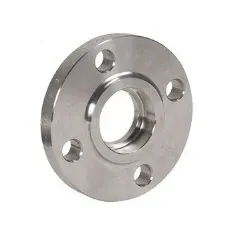-
Cangzhou Yulong Steel Co., Ltd.
-
Phone:
+86 13303177267 -
Email:
admin@ylsteelfittings.com

Oct . 21, 2024 03:12 Back to list
Different Varieties of Welded Pipe and Their Applications in Industry
Different Types of Welded Pipes A Comprehensive Overview
Welded pipes are integral to modern infrastructure, utilized in various applications ranging from construction to oil and gas. These pipes are manufactured by rolling metal sheets and welding them along the seam, giving them strength and integrity. This article provides an overview of the different types of welded pipes, their manufacturing processes, and their applications.
1. Types of Welded Pipes
Welded pipes can be broadly classified into several categories based on their manufacturing processes and applications
a. Electric Resistance Welded (ERW) Pipes
ERW pipes are produced by rolling hot-rolled steel sheets and welding them longitudinally using electric resistance welding. This method involves passing an electric current through the metal, which generates heat and joins the edges together. ERW pipes are known for their high strength and are predominantly used in structural applications, oil and gas transportation, and water supply systems.
b. Spiral Welded Pipes
Spiral welded pipes are made by winding a ribbon of steel around a cylindrical mandrel and welding the spiral seam. This method allows for the production of large-diameter pipes and is often used in water transmission, sewerage systems, and industrial applications. The spiral weld provides excellent strength and durability, making these pipes suitable for high-pressure applications.
c. Submerged Arc Welded (SAW) Pipes
SAW pipes are manufactured by introducing a filler material into a gap between two parts of the pipe, which is then submerged under a layer of flux. This process is highly efficient and produces a strong seal. SAW pipes are commonly used in the construction of pipelines for oil, gas, and water due to their resistance to high pressure and corrosion.
d. High-Frequency Induction (HFI) Welded Pipes
This type of welding employs high-frequency alternating current to fuse the edges of the pipe. HFI welding processes are known for their speed and efficiency. These pipes are widely used in the automotive, aerospace, and construction industries thanks to their lightweight and strength.
e. Laser Welded Pipes
Laser welding technology utilizes high-energy laser beams to join materials together, offering extremely precise welds. Laser welded pipes are increasingly gaining popularity in industries requiring high precision and minimal heat-affected zones, such as medical devices and high-end automotive applications.
types of welded pipes

2
. Manufacturing Process of Welded PipesThe manufacturing process of welded pipes typically involves several key stages
1. Material Selection The choice of base materials, such as carbon steel, stainless steel, or alloy steel, is crucial and depends on the intended application.
2. Forming Hot or cold rolling processes are used to shape the metal sheets into tubular forms.
3. Welding The selected welding method (ERW, SAW, or others) is applied to join the edges of the pipe.
4. Testing and Inspection Non-destructive testing methods, such as ultrasonic and radiographic testing, are conducted to ensure the integrity of the welds.
5. Finishing Operations Pipes may undergo additional treatments such as galvanizing or coating to enhance corrosion resistance.
3. Applications of Welded Pipes
Welded pipes are utilized across various sectors, including
- Construction Used for scaffolding, structural supports, and various types of building frameworks. - Oil and Gas Essential for transporting crude oil, natural gas, and refined products, often requiring pipes that can withstand high pressures. - Water Supply and Drainage Widely used in municipal plumbing systems, sewage pipes, and irrigation. - Automotive Employed in manufacturing exhaust systems and supporting structures due to their lightweight and strength.
4. Advantages of Welded Pipes
Welded pipes offer several advantages over their seamless counterparts, including
- Cost-Effectiveness Generally, welded pipes are cheaper to manufacture than seamless pipes, making them favorable for budget-conscious projects. - Production Speed The manufacturing process of welded pipes is quicker, allowing for faster project completion. - Availability Welded pipes are widely available in a range of sizes and wall thicknesses, catering to various engineering needs.
In conclusion, welded pipes are essential components in a myriad of applications, ranging from basic construction to complex oil and gas pipelines. Understanding the different types of welded pipes and their respective benefits and applications can significantly enhance decision-making for engineers, project managers, and procurement professionals in their respective fields.
Latest news
-
ANSI 150P SS304 SO FLANGE
NewsFeb.14,2025
-
ASTM A333GR6 STEEL PIPE
NewsJan.20,2025
-
ANSI B16.5 WELDING NECK FLANGE
NewsJan.15,2026
-
ANSI B16.5 SLIP-ON FLANGE
NewsApr.19,2024
-
DIN86044 PLATE FLANGE
NewsApr.19,2024
-
DIN2527 BLIND FLANGE
NewsApr.12,2024
-
JIS B2311 Butt-Welding Fittings LR/SR 45°/90° /180°Seamless/Weld
NewsApr.23,2024
-
DIN2605-2617 Butt-Welding Fittings LR/SR 45°/90°/180° Seamless/Weld
NewsApr.23,2024











